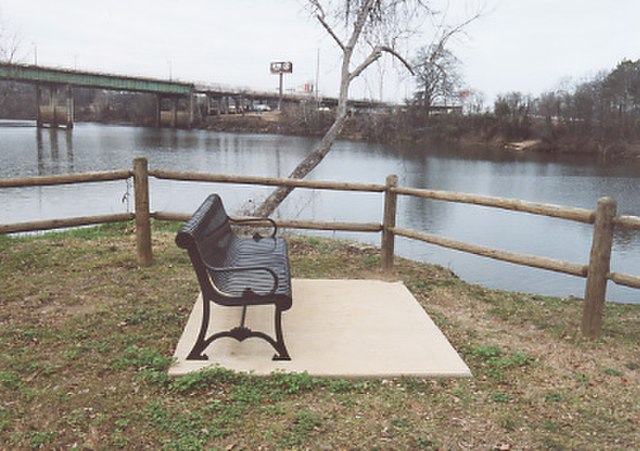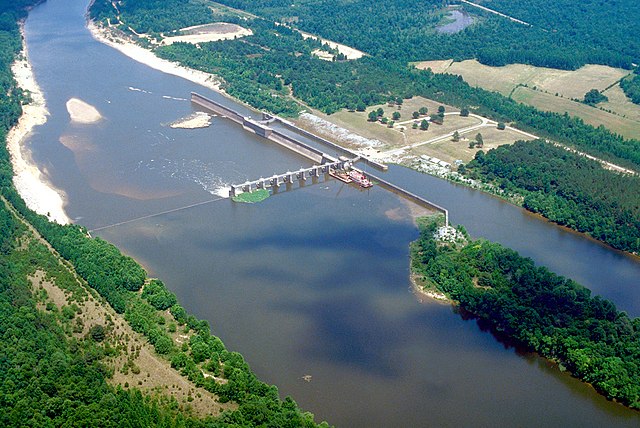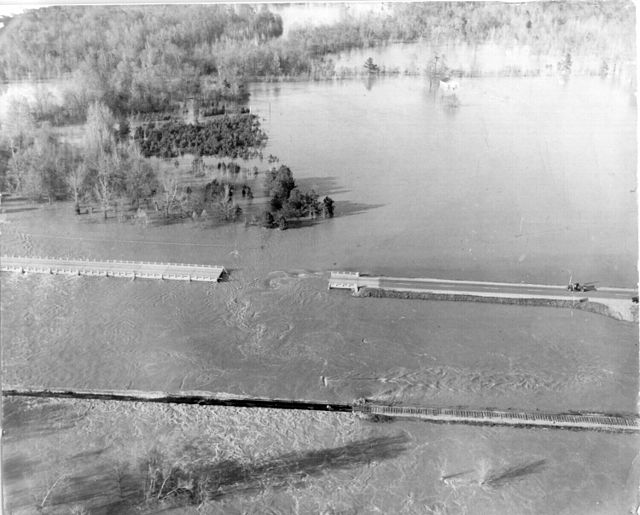The Black Warrior River is a waterway in west-central Alabama in the southeastern United States. The river rises in the extreme southern edges of the Appalachian Highlands and flows 178 miles (286 km) to the Tombigbee River, of which the Black Warrior is the primary tributary. The river is named after the Mississippian paramount chief Tuskaloosa, whose name was Muskogean for 'Black Warrior'. The Black Warrior is impounded along nearly its entire course by a series of locks and dams to form a chain of reservoirs that not only provide a path for an inland waterway, but also yield hydroelectric power, drinking water, and industrial water.
The Black Warrior River passes by a park in downtown Tuscaloosa, Alabama. The Hugh R. Thomas Bridge is seen in the background
Bankhead Lock and Dam, impounding Bankhead Lake in Tuscaloosa County
Holt Lock and Dam, impounding Holt Lake in Tuscaloosa County
U.S. Army Corps of Engineers Survey of the Black Warrior and Tombigbee Rivers
The Tombigbee River is a tributary of the Mobile River, approximately 200 mi (325 km) long, in the U.S. states of Mississippi and Alabama. Together with the Alabama, it merges to form the short Mobile River before the latter empties into Mobile Bay on the Gulf of Mexico. The Tombigbee watershed encompasses much of the rural coastal plain of western Alabama and northeastern Mississippi, flowing generally southward. The river provides one of the principal routes of commercial navigation in the southern United States, as it is navigable along much of its length through locks and connected in its upper reaches to the Tennessee River via the Tennessee-Tombigbee Waterway.
Tombigbee River at White Bluff (Ecor Blanc) in Demopolis
Coffeeville Lock and Dam on the Tombigbee River near Coffeeville, Alabama. Coffeeville is the last lock and dam down the Tombigbee River to the Gulf of Mexico.
1955 Failure of the Mississippi Highway 25 N/U.S. Route 45 S bridge over the Tombigbee River relief (Big Nichols Creek)/Tennessee-Tombigbee Waterway in Aberdeen, Mississippi during the March floods of that year







